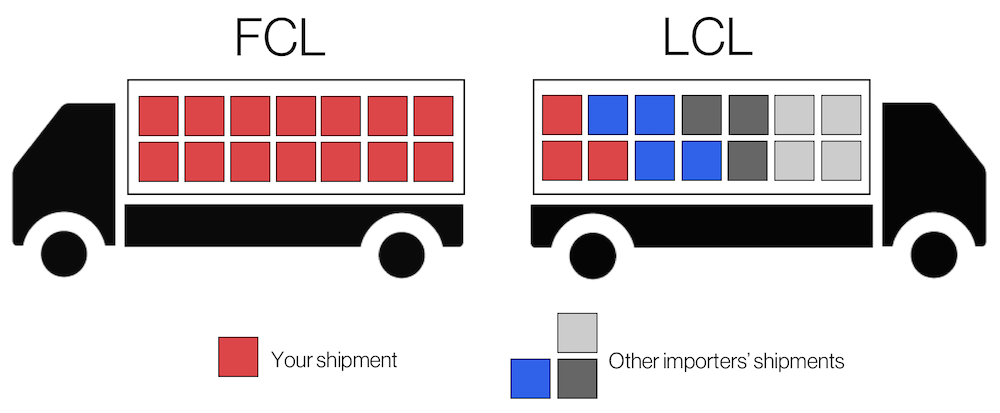When importing from China or anywhere else in the world, we come across terms such as LCL or FCL. What do these terms mean? Or LCL vs FCL which one should you choose? In this article, we will explain about LCL vs FCL and tips about choosing the most suitable option for your cargo shipment.
LCL vs FCL
FCL is short for Full Container Load. FCL refers to one ISO standard container which is loaded with shipments of only one consignee. Potentially, this means that one container is filled dedicated to one consignee. By choosing FCL, the maximum weight or volume of the container is allowed, but FCL on sea freight points to only one container reserved by a merchant in order to ship their cargo with increased security compared to LCL.

LCL on the other hand, stands for Less Container Load. This term refers to shipping goods in less than the volume of one ISO standard container in sea freight. LCL is a shipment that is not big enough in size to fill a whole standard container. This term can also be defined as a cargo consignment that is not large enough to be shipped in one separate container and has to be joined with other shipment goods going to the same destination in one container.
Further Reading: LCL and FCL Compared | Which One Suites Your Cargo in China?
LCL vs FCL and tips to consider
LCL vs FCL: Which one should I choose to sea freight my cargo? This is a very typical question that comes across most consignees’ head, below we will explain LCL vs FCL and tips for you to make a more informed decision:
LCL allows low inventory
If you do not have the budget or warehouse space, to purchase a whole container of goods, it is smarter to go for LCL. This method allows you to freight much smaller volumes of products rather than purchasing a whole container worth of products.
FCL may end up being cheaper than LCL
LCL would cost more per unit of freight than FCL would. This is due to the fact that freight brokers prefer a full container load because it is easier for them to fill a whole container than to figure out how many LCL shipments can be packed into a full container.
LCL makes delivery appointments easier
Many destination ports demand a delivery appointment before the cargo arrival. With an FCL cargo, this can become risky with an FCL freight, where the container has to be picked up, delivered, and returned to the port within around 8 days.
In contrast, by using an LCL shipment method, you will have more time (basically around 5 days at the port and afterward 7 days at the warehouse) to handle your cargo. This method will make taking your appointment at the port more likely and more relaxed.
Further Reading: Air and Sea Freight in China | Upsides of Each Cargo Technique
FCL arrives faster than LCL
As soon as an FCL cargo shipment reaches the port, the products are unloaded from the container and directly delivered to the importer.
For delivering LCL cargo, which requires additional steps, the process is more complicated: consolidating various containers, reviewing multiple documents per container, and then sorting goods for each customer. There is a potential for delay at every step of the process.
LCL makes splitting shipments easier
If you are delivering to multiple facilities, the LCL service will allow you to split your shipment, instead of shipping multiple full containers.

